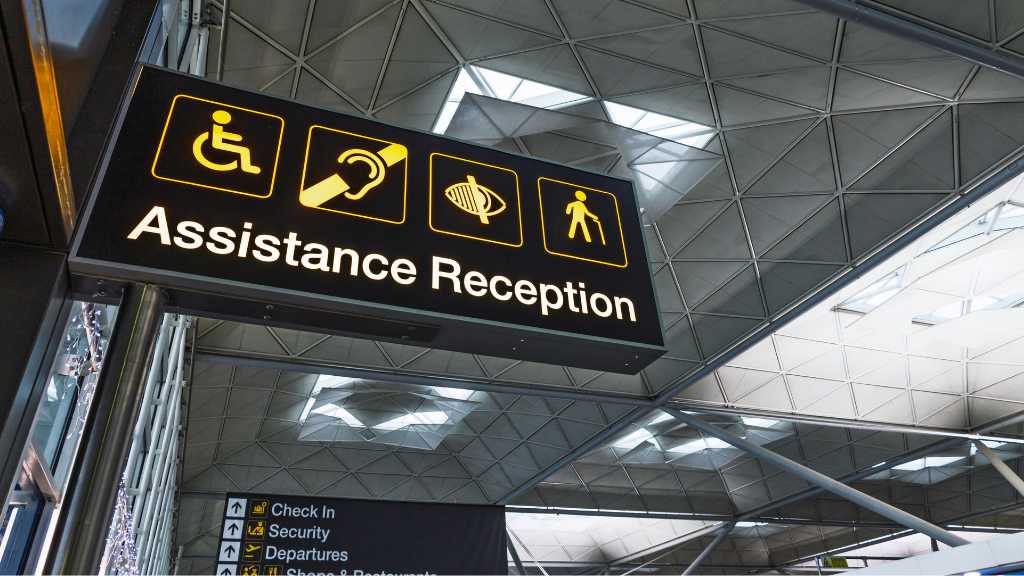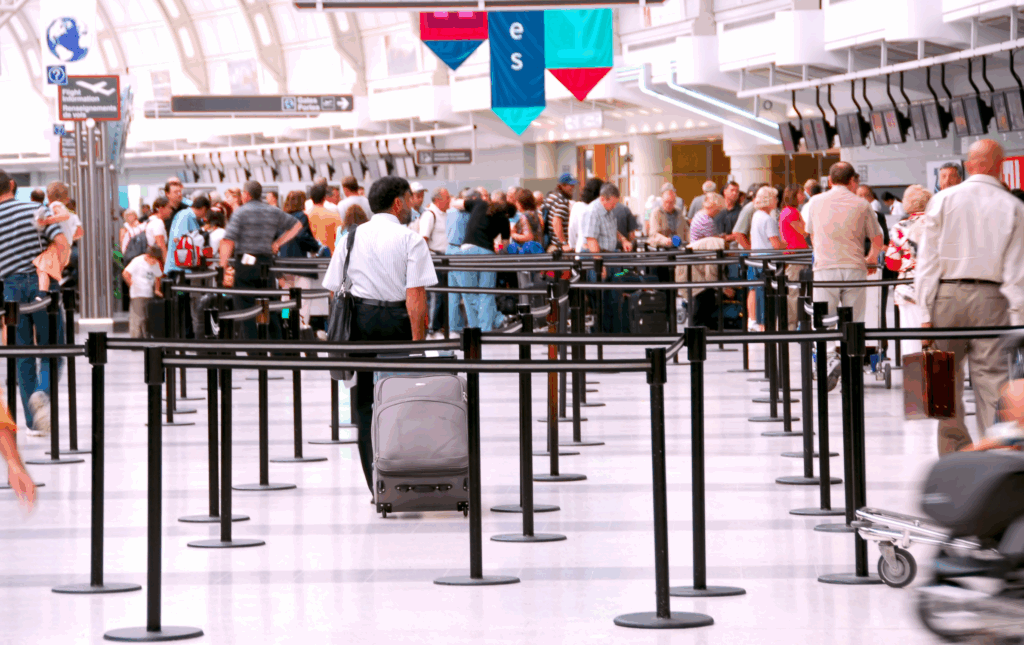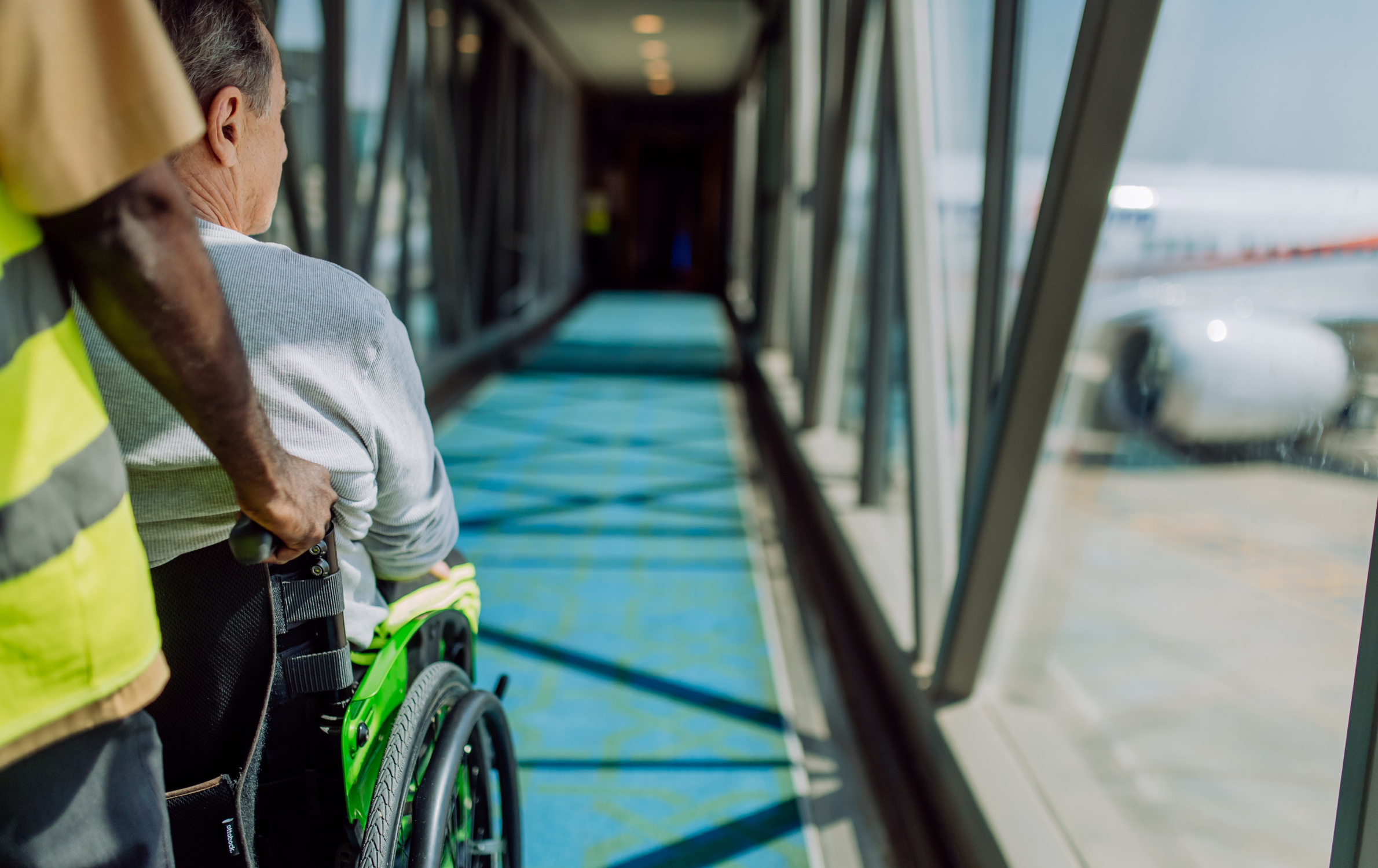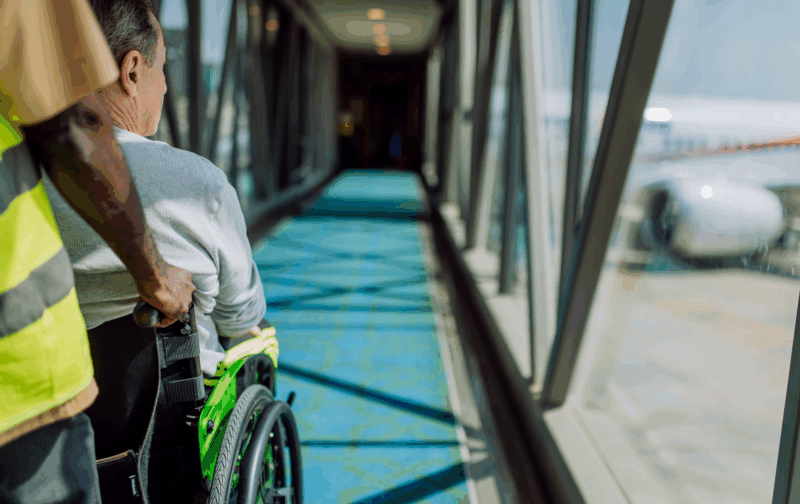Ensuring accessibility and inclusion is a fundamental aspect of enhancing the passenger experience at airports. It means removing the barriers to entry for people of all backgrounds and abilities.
Human factors specialists at SYSTRA collaborate with architects, airport operators, and disability advocates to design facilities that cater to the needs and preferences of passengers with disabilities, limited mobility, or sensory impairments.
In our third article looking at the role of human factors at airports – SYSTRA’s Principal Consultant in human factors, Dr George Sammonds, looks at what contributes to creating a welcoming and inclusive airport environment.
Universal design for accessible and inclusive airports
Universal design principles form the foundation of creating accessible and inclusive spaces. Human factors experts work closely with architects and designers to implement universal design features throughout an airport. This approach involves considering the diverse range of abilities and needs of passengers from the outset of the design process. Features such as wheelchair-accessible pathways, ramps, elevators, and tactile flooring are integrated seamlessly into the terminal layout. Universal design ensures all passengers, regardless of their physical abilities, can navigate the airport independently, comfortably, and safely.
The need for clear signage within airport terminals
Clear signage and wayfinding systems are crucial for passengers with visual impairments or cognitive disabilities. Human factors specialists collaborate with accessibility experts to design signage that incorporates large, legible fonts, high colour contrast, and clear symbols. Braille signage and tactile maps are provided to assist passengers with visual impairments. Additionally, audio announcements and digital displays with real-time information cater to passengers with hearing impairments. Human-centred design principles ensure signage is strategically placed, allowing all passengers to easily locate important areas, amenities, and points of interest throughout the airport.

Providing assistance for passengers with disabilities or special needs
Airports recognise the importance of providing assistance and support services for passengers with disabilities or special needs. Human factors interventions focus on creating designated assistance points and trained staff who are knowledgeable about accessibility requirements. These staff members offer guidance, support, and assistance with check-in, security screening, boarding, and navigating the airport. Human factors specialists work alongside disability organisations to ensure staff are trained in providing empathetic and respectful assistance to passengers with disabilities, enhancing their overall experience and promoting independence.
Sensory-friendly spaces at airports
Airports can be overwhelming environments for passengers with sensory sensitivities, such as those on the autism spectrum. Human factors experts work to create sensory-friendly spaces within terminals. These areas provide a calm and quiet environment, free from excessive noise, bright lights, and sensory stimuli. Quiet rooms, sensory lounges, or designated calming zones equipped with comfortable seating and dimmed lighting offer respite for passengers who may need a break from the bustling atmosphere. Additionally, the incorporation of visual cues, such as pictograms and visual schedules, can assist passengers with cognitive disabilities in navigating the airport with greater ease.
Collaboration with disability advocates
Human factors specialists actively engage with disability advocacy groups and organisations to gain insights and feedback from individuals with disabilities. This collaboration ensures the airport environment is designed and modified based on the real experiences and needs of the diverse passenger population. By involving the end-users in the design process, airports can proactively address barriers and improve accessibility. This fosters an inclusive environment that empowers passengers with disabilities to travel with confidence and dignity.
In conclusion, human factors considerations are pivotal in ensuring accessibility and inclusion at airports. Through the integration of universal design principles, clear signage, wayfinding systems, and the provision of assistance and support services, airports can create a welcoming environment for all passengers. By collaborating with disability advocates and incorporating feedback from individuals with disabilities, airports can continually improve their facilities and services, ensuring that the diverse needs and preferences of all passengers are met. Ultimately, an accessible and inclusive airport experience promotes equality, independence, and a sense of belonging for every traveller.
Other factors required at airports
Staff interactions and customer service at airports
Airport staff members are instrumental in shaping the passenger experience. Human factors training equips employees with effective communication skills, a clear appreciation towards the value of empathy, and a customer-centric approach. Well-trained staff who engage with passengers in a friendly and professional manner foster a positive atmosphere, alleviate stress, and ensure a smooth and enjoyable journey. Human factors interventions can also facilitate multilingual communication and cultural sensitivity, catering to the diverse needs and expectations of passengers from various backgrounds.
Retail and leisure facilities for airport passengers
Airports have evolved into multifaceted spaces that offer a wide array of retail and leisure amenities. Human factors considerations come into play when designing these areas to address the needs and preferences of travellers. Factors such as product placement, accessibility, seating comfort, and digital signage contribute to an engaging and enjoyable experience. Human-centred design principles facilitate the creation of vibrant and welcoming spaces, transforming airports into hubs for relaxation, entertainment, and cultural exploration.
The passenger experience at airports is influenced by numerous human factors considerations, ranging from terminal design and layout to staff interactions, retail facilities, and accessibility. By incorporating human-centred design principles, airports can create spaces that are intuitive, efficient, and welcoming, ultimately enhancing customer satisfaction and loyalty. The ongoing integration of technology, the prioritisation of staff training, and the emphasis on inclusivity ensures airports become more than mere transportation hubs – they become transformative spaces that enrich the overall journey for passengers. As airports continue to evolve, understanding and leveraging human factors will remain crucial in crafting exceptional passenger experiences that leave a lasting positive impression.
You May Also LIKE

- Expert Insights
George SAMMONDS
Enhancing the passenger experience – the role of human factors at airports
Read more
- Expert Insights
George SAMMONDS
Streamlining processes for a seamless passenger experience at airports
Read more
- services


 Australia
Australia  Brazil
Brazil  Canada
Canada  Chile
Chile  China
China  Columbia
Columbia  Denmark
Denmark  France
France  India
India  Indonesia
Indonesia  Ireland
Ireland  Italy
Italy  Malaysia
Malaysia  New Zealand
New Zealand  Norway
Norway  Panama
Panama  Peru
Peru  Poland
Poland  Portugal
Portugal  Saudi Arabia
Saudi Arabia  Singapore
Singapore  South Korea
South Korea  Spain
Spain  Sweden
Sweden  Taiwan
Taiwan  Thailand
Thailand  Türkiye
Türkiye  United States
United States  Vietnam
Vietnam